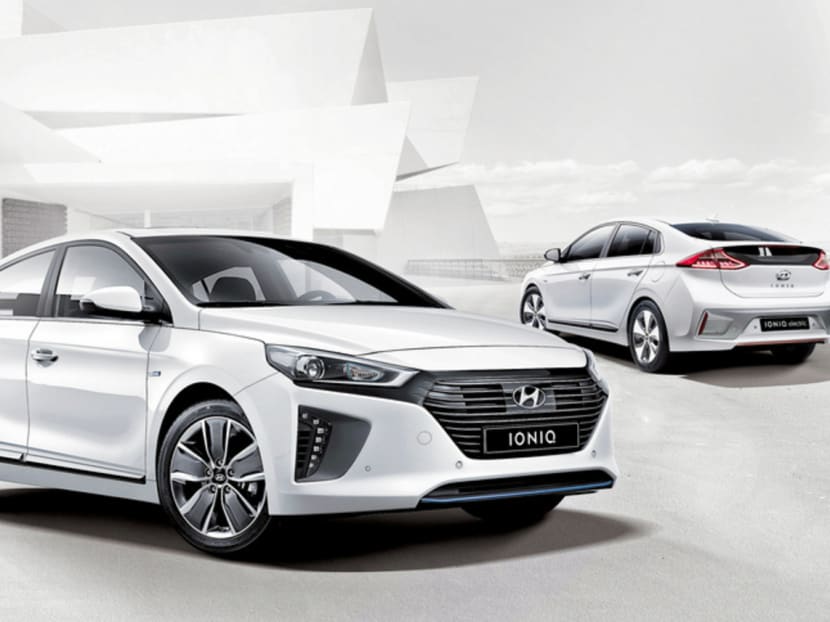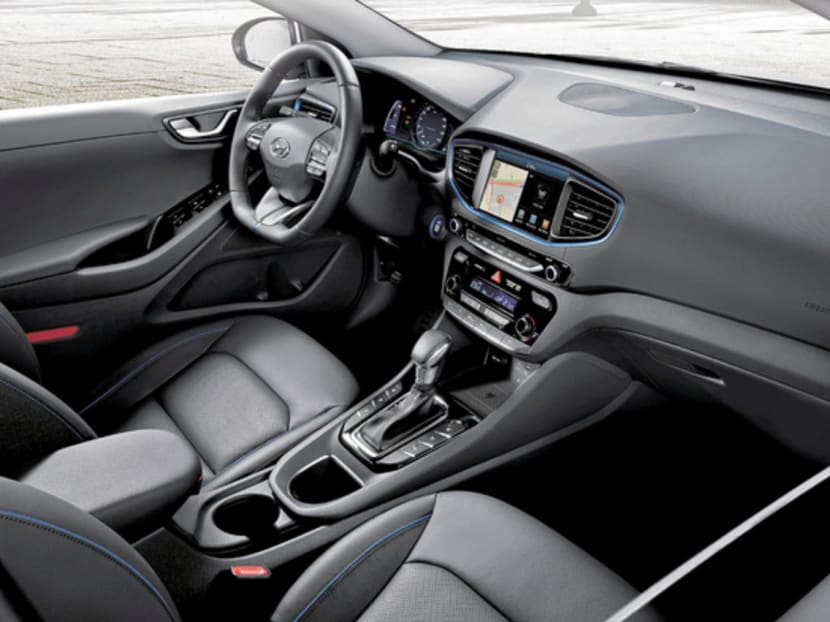Electric dreams
HWASEONG (SOUTH KOREA) — What can a minute-long drive of a car tell you about it? Not much, but perhaps it can say a lot about the people who built it.


HWASEONG (SOUTH KOREA) — What can a minute-long drive of a car tell you about it? Not much, but perhaps it can say a lot about the people who built it.
Hyundai’s Ioniq certainly has plenty to communicate.
It’s part of what Hyundai’s top engineer calls an “aggressive eco-car development roadmap” that will see the Korean car maker launch 28 eco-friendly cars by 2020, all built with Hyundai’s technology.
“Our company will lead in the eco-friendly car market,” vows Yang Woong-chul, who oversees Hyundai’s research and development department and its 10,000 engineers.
GREEN CREDENTIALS
The Ioniq is not Hyundai’s first eco car. In 2013, the company built a version of its Tucson Sports Utility Vehicle (SUV) that ran on hydrogen fuel cells, the first commercially available car in the world to do so. It also sells hybrid versions of several existing models.
But the Ioniq is different. “Ioniq is the first project that Hyundai has ever made that is exclusively for eco cars,” said Dr Ahn Byungki, the director of Hyundai’s eco-car performance group.
The project actually resulted in a family of three different cars. They share the same body, but each uses a different propulsion system.
The Ioniq Electric is an electric vehicle that can cover more than 190km on a single charge, powered by a large lithium-ion battery.
The Ioniq Plug-In can also function like an electric vehicle, but with a shorter range of about 50km. It also has a petrol engine for longer distances, but that is designed to be used only sparingly.
Finally, the Ioniq Hybrid has a petrol-electric drivetrain, albeit one that differs from Toyota’s Prius.
Toyota pairs a 1.8-litre engine with an electric motor and blends the drive from them together with a power split device that behaves like a Continuously Variable Transmission (CVT). The Ioniq has a much more straightforward layout. It lines up a 1.5-litre engine, an electric motor and a twin-clutch, six-speed transmission, and connects them all together.
Though both are designed to save fuel, Hyundai claims the Ioniq Hybrid will be more frugal than the Toyota Prius, which averages 3.7L/100km.
normal by design
Both cars offer different driving experiences. While the Toyota is smooth, silent and futuristic, the Ioniq feels much more like a normal petrol-engined car to drive. The engine’s revs rise and fall as the car works its way through the transmission’s six speeds, and the brakes feel normal, with little of the jerkiness that some hybrids exhibit.
All that is by design. “Customers want a car that behaves like a normal vehicle but that delivers (a hybrid’s) fuel economy,” said Scott Yoon, a project manager for the Ioniq.
He said Hyundai wanted the Ioniq to be a fun car to drive, and the acceleration is certainly eager. Where the Prius sometimes feels lethargic, its Korean rival seems much more immediately responsive.
The same is true of the Ioniq Electric. Some people think of electric vehicles as glorified golf buggies, but the battery-powered Hyundai can hold an impressive, sustained burst of acceleration well into three-figure speeds. It, too, handles and brakes like a normal car, and only the absence of an engine sound reminds you that it isn’t one.
On the outside, the Ioniq Electric does look different from the other versions of the car. Its nose has no grille, for example, as if to remind you that it has no fuel-burning engine up front.
And there are strips of copper-coloured bodywork, designed to make observers think of the wires that shuttle power around its electric drive system.
GREEN FUTURE
Whether the car succeeds, Hyundai seems committed to electric vehicles. It is planning to manufacture an electric SUV with a range of 320km — enough for about a week’s travel in Singapore — by 2018, and will have six electric cars on sale by 2020.
Yet, the eco-car team seems careful to downplay its ambitions. For 20 years, no one has seriously challenged Toyota at the hybrid car game, said Dr Ahn.
“We’re like David and Toyota is Goliath,” he added.
For all that, hybrid and electric cars account for only a small niche of the total car population, particularly in Singapore. Figures from the Land Transport Authority show that there are only 119 plug-in or fully electric cars on the road. Not counting taxis, there are only 6,810 hybrids running around, out of a total private car population of 597,648.
Still, the Ioniq Hybrid will be making its way here. Komoco Motors intends to launch it in September, even though prospects for hybrid cars are slim in general. “We just want people to know that Hyundai has this kind of technology, too,” said a source from the company.
Ultimately, that could be the Ioniq’s real job. Even if it doesn’t deliver huge sales, it has value as a symbol of Hyundai’s progress as a car maker.
Having built the Ioniq, Hyundai is now counting on it to help build its green reputation.





